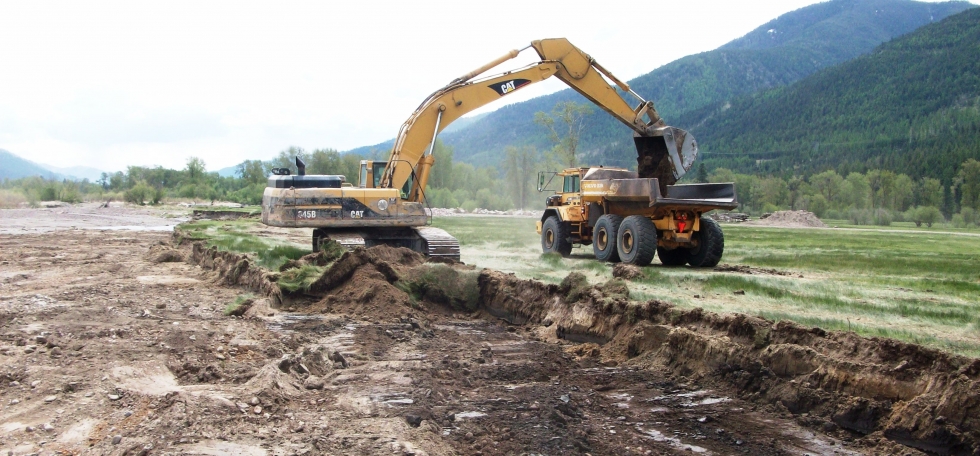February 2014, Vol. 241 No. 2
Features
Energy Turning Ghost Towns To Boom Towns

The following article, written by Cary Hegreberg, a native North Dakotan who is now executive director of Montana Contractors’ Association, discusses the effects oil development has played in communities that until recently were on the verge of extinction.
The Montana Contractors Association, along with the Montana Petroleum Association, the Montana Coal Council and KLJ, is hosting the 2014 Montana Energy conference/tradeshow April 2-3 at MetraPark in Billings, MT. The event is the largest energy conference in the Treasure State and showcases business opportunities the growing energy industries have to offer. www.montanaenergy.net
During my annual hunting pilgrimage back home to northwestern North Dakota last fall, I was struck by the differing opinions about how the recent oil development activity has affected families and communities.
Clearly, landowners and their descendants who possess mineral rights on farmland are benefiting immensely from a financial windfall. Others are selling gravel and even water to the various companies building facilities, fracking wells, etc. However, others bemoan the remarkable overnight change and impacts oil development is creating.
Many narrow gravel roads are in deplorable condition as steady streams of industrial trucks meet each other with drivers praying they do not slip off into the muck. I witnessed a traffic jam in remote Fortuna, ND as a paving crew worked on Highway 5 and a line of oil-related trucks attempted to both enter and exit the highway at the junction of a county road. Five years ago, a person could sit in the middle of that intersection eating lunch and would not be bothered by traffic.
This sudden, unexpected surge of people, vehicles, inconvenience, and problems, has some people in the area craving “the good old days” before the oil boom. A neighboring farmer told me, “I just want things to go back the way they were.”
As I drove out of his yard and across rural roads in search of likely pheasant hunting spots, the ruins of old farmsteads I’d driven past many times before took on new meaning. Is this what some people wanted to go back to? Are the “good old days” when perfectly good homes and outbuildings were shuttered forever because the elderly occupants died or moved to town?
Were things really better when school after school, in town after town, closed and consolidated — and rural churches closed by the dozens because the congregations could no longer support a pastor? There are more abandoned schools and churches in Divide County than there are functional ones. Indeed, there are probably more abandoned homes than occupied ones—and that does not include the ones torn down or burned over the years.
The truth is the northern plains area of western North/South Dakota and eastern Montana had been bleeding population since the 1960s. The region is littered with virtual ghost towns that had been left on life support for decades. Communities like Alkabo, Ambrose, and Alamo are anchored by prominent, once-proud but long-vacant high schools that graduated students who trudged off to college or jobs in the city. For decades, people like me have mostly come back home to hunt or attend funerals.
In recent years, local and state governments, along with rural cooperatives and brave local investors, had poured millions of dollars into ill-fated economic development projects like pasta plants, hog-feeding operations, and other value-added Ag processing ventures. While a few success stories exist, they were mostly desperate attempts to create a few decent jobs that could allow a handful of young people to stay in the community.
Thanks to the oil boom, the abandoned pasta plant at Crosby, ND is now a busy truck stop, complete with tire repair, diesel mechanics, and farm supply store. Ten years ago you could have bought most any house in town for $25,000, with many sitting vacant. Today, Crosby is annexing land for new subdivisions, and school enrollment is increasing for the first time in decades.
Even Williston, which had maintained a population of about 14,000 for years, because people from the adjoining rural areas moved there when they got too old to feed cows or plow snow on the farm, is growing at a faster pace than ever before.
For most of the area known as “the Bakken,” the alternative to oil development was a slow, steady downward economic spiral as technology made farming and agricultural services more efficient and less labor intensive.
As a Montana resident who represents industrial construction firms, recent development in the Oil Patch has been a Godsend. Many Montana companies are earning revenues, paying wages and health insurance to their Montana workers, and paying taxes, when they would have otherwise gone out of business or dramatically downsized.
Our Montana contractors are working for private oil and pipeline companies, railroads, real estate developers, and for public owners like local and state governments trying to catch up with infrastructure deficiencies.
Energy development spells jobs, economic opportunity and prosperity, often for communities that were destined for eventual ghost town status. Homes now have value when the former residents retire or die. Local youths can find jobs in their hometowns. Communities have a tax base to support a respectable quality of life.
While change and inconvenience are everyday occurrences due to the oil boom, going back to the way things used to be – stagnant development and outmigration – will not create the future of vibrant communities we now see ahead of us.
Author: Cary Hegreberg is executive director of the Montana chapter of the Associated General Contractors of America (AGC), host of 2014 Montana Energy and is a graduate of Divide County High School.





Comments